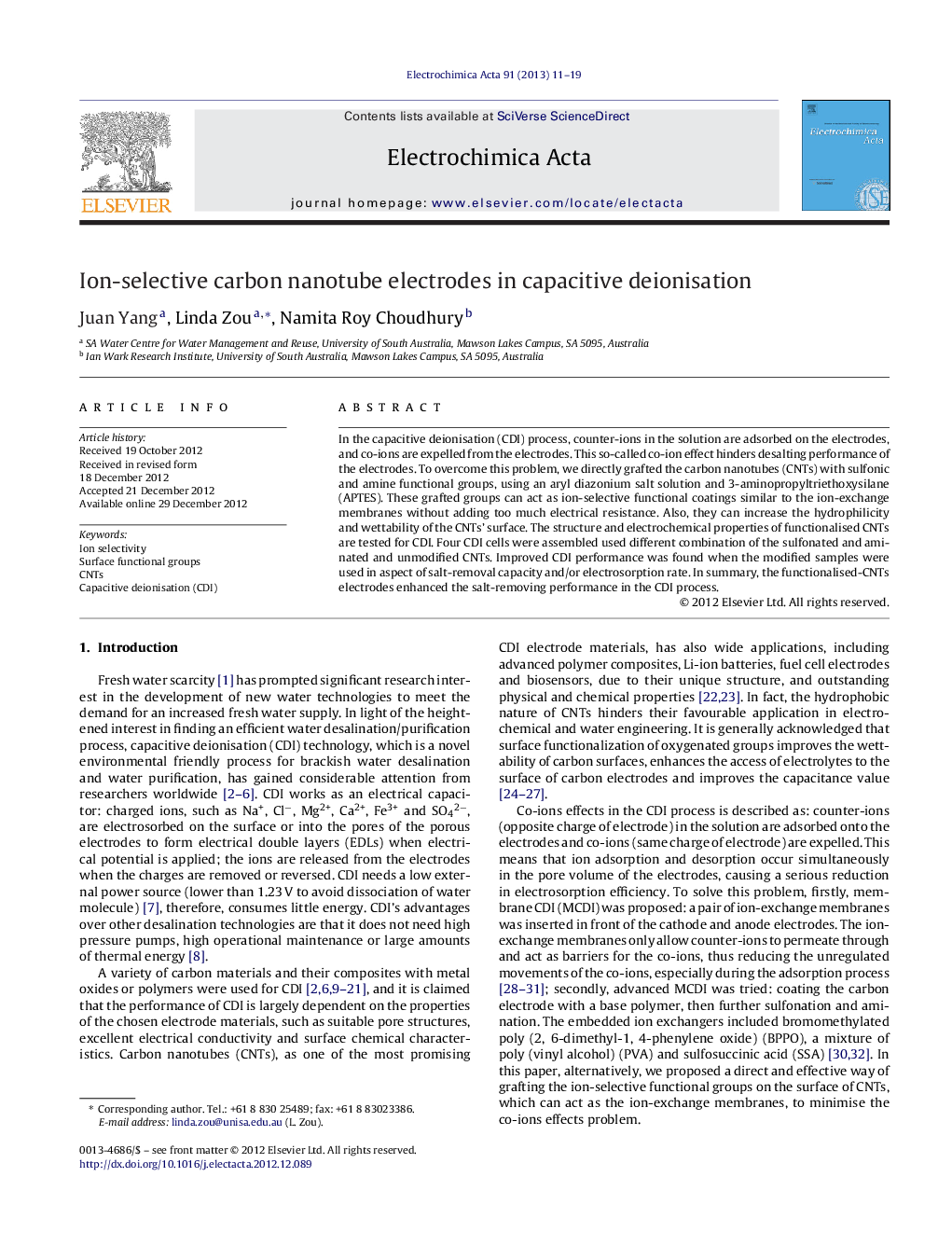| Article ID | Journal | Published Year | Pages | File Type |
|---|---|---|---|---|
| 186967 | Electrochimica Acta | 2013 | 9 Pages |
In the capacitive deionisation (CDI) process, counter-ions in the solution are adsorbed on the electrodes, and co-ions are expelled from the electrodes. This so-called co-ion effect hinders desalting performance of the electrodes. To overcome this problem, we directly grafted the carbon nanotubes (CNTs) with sulfonic and amine functional groups, using an aryl diazonium salt solution and 3-aminopropyltriethoxysilane (APTES). These grafted groups can act as ion-selective functional coatings similar to the ion-exchange membranes without adding too much electrical resistance. Also, they can increase the hydrophilicity and wettability of the CNTs’ surface. The structure and electrochemical properties of functionalised CNTs are tested for CDI. Four CDI cells were assembled used different combination of the sulfonated and aminated and unmodified CNTs. Improved CDI performance was found when the modified samples were used in aspect of salt-removal capacity and/or electrosorption rate. In summary, the functionalised-CNTs electrodes enhanced the salt-removing performance in the CDI process.
► Modified CNTs surface by the aryl diazonium salt solution and APTES. ► –SO3−, NH3+ groups provided ion selectivity and increased surface wettability. ► Improved CDI performances were achieved.
